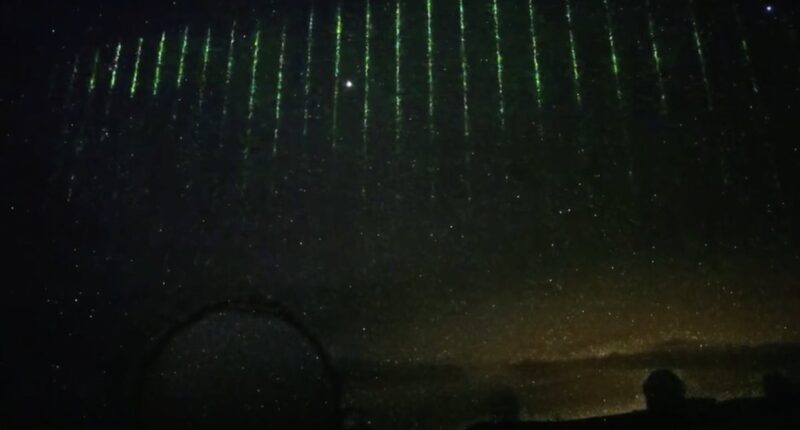AN EERIE display of bright green laser lights lit up the skies over Hawaii just a few days ago.
The strange spectacle was caught on camera – revealing a sudden flash that lasted barely more than a second.
Footage-watchers compared the sight to “digital rain” due to its sci-fi appearance.
The laser lights flashed in the sky on January 28 over Mauna Kea, a 13,800ft dormant volcano on Hawaii’s Big Island.
But the actual cause of the lightshow was a piece of Nasa technology, experts say.
“On Jan 28, 2023, HST, Subaru-Asahi Star Camera captured green laser lights in the cloudy sky over Maunakea, Hawai’i,” the National Astronomical Observatory of Japan explained.
“The lights are thought to be from a remote-sensing altimeter satellite ICESAT-2/43613.”
The camera was attached to a telescope on the legendary peak.
And it reveals lasers that were emitted by an altimeter – a device to measure altitude.
The satellite in question is designed to track changes in the cryosphere.
Most read in News Tech
That’s a catch-all term for anything on Earth where water is in its solid form.
That includes sea ice, lake ice, river ice, snow cover, glaciers, ice caps, ice sheets and frozen ground.
Part of that surveillance includes firing bright laser beams towards the surface of Earth, and then measuring how long they take to bounce back.
That allows the satellite to calculate how far away it is from the surface i.e. its altitude.
“The pulses of light travel through a series of lenses and mirrors before beaming to the ground,” Nasa explains.
“This pathway along the optical bench serves to start the stopwatch on the timing mechanism, check the laser’s wavelength, set the size of the ground footprint, ensure that the laser and the telescope are perfectly aligned, and split the laser into six beams.
“About 20 trillion photons leave ATLAS through its box structure with each pulse; only about a dozen return to the satellite’s telescope.
“To catch these photons, ATLAS is equipped with a beryllium telescope, 2.6 feet in diameter.”
The laser is capable of firing 10,000 laser pulses every single second.


And that means it can track altitude every 2.3 feet across its ground path along the surface of Earth.
The Hawaii camera caught some of the laser beams, resulting in the spectacular footage.










